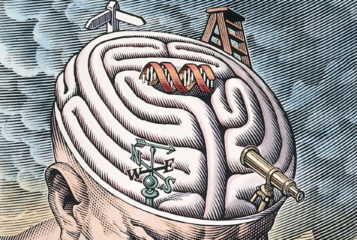Being a bioethicist in the Antipodes is becoming a dangerous business these days. Just over a year ago, the publication by two Australian academics of a paper exploring the acceptability of 'post-birth abortion' led to media furore, hate mail and even death threats to the authors. Now, New Zealand has had its own mini-firestorm generated by an academic paper on a controversial topic.
A recent edition of the New Zealand Medical Journal contained an article by Otago University's Robert Cole and Gareth Jones, entitled 'Testing times: do new prenatal tests signal the end of Down syndrome?' The article dealt with non-invasive prenatal diagnosis (NIPD), a new way of testing fetuses for Down's syndrome, 'which enables diagnosis earlier in pregnancy with less risk of complications'.
Cole and Jones defended a broadly pro-choice approach to prenatal screening and abortion of Down's syndrome fetuses, stressing that their position did not devalue the lives of people with Down's syndrome, and striving to distinguish their position from eugenics.
Such efforts were unpersuasive to the campaign group SavingDowns. The group, which opposes screening for the purposes of allowing termination of affected pregnancies, responded not only by criticising the paper's content but by calling for the resignation of Jones and reporting the article to the Human Rights Commission.
Whereas the paper by the Australian academics, Minerva and Giubilini, was at least genuinely provocative (while undeserving of some of the appalling response it garnered), the Cole and Jones paper may seem an unlikely target for such vitriol. The position it adopted was essentially in support of the legal status quo and in keeping with a fairly mainstream body of bioethical opinion.
The contribution of people with first-hand experience of these issues is indispensable in the context of discussing policy and practice around matters like this. Unfortunately, SavingDowns' apparent policy of trying to wreck the career of anyone who says what they consider the wrong thing is hardly likely to facilitate much productive dialogue with academia or healthcare professionals.
It would also be unfortunate though, if the issue of 'academic freedom' completely overshadowed the substantive questions arising from this dispute. SavingDowns' scattergun approach to attacking the article has resulted in a lot of shots going wide of the target, but a few of their concerns merit closer attention.
The position set out in the Cole and Jones article is that prenatal screening and abortion are only options. The position of the state and the profession is not pro-screening or pro-abortion, and certainly not eugenic. Rather, the value being upheld throughout is one of choice.
But the truth may not be so simple. New Zealand law doesn't allow for abortion on demand. Specifically, abortion wouldn't be permitted for just any reason that the pregnant woman deemed sufficient. If our position were genuinely 'pro-choice', wouldn't we allow those choices too? To say otherwise, to make an exception for 'seriously handicapped' fetuses, seems to commit us, as a society, to saying something in particular about handicap.
SavingDowns trace this back to the Royal Commission Report of 1977 that drew a marked distinction between abortion 'for reasons of social convenience', which it viewed as 'morally wrong' and abortion of a 'fetus [...] likely to be born with a severe physical or mental handicap', which is 'not immoral'. It is not only groups like SavingDowns that regard this position as dubious or discriminatory.
Of course, this 'discriminatory' position could be resolved in one of two ways. The restrictive course would be to treat 'handicapped' pregnancies the same way as we currently treat 'normal' pregnancies, allowing abortion only where the continuation of pregnancy presents a serious risk to the mother, etc. The permissive course would be to treat all pregnancies as we currently do those affected by 'serious handicap', allowing abortion on demand up to 20 weeks gestation.
This latter course is the one I have advocated in relation to preimplantation screening (see BioNews 398). A genuinely pro-choice approach to abortion would not treat 'disabled pregnancies' differently from other kinds. Rather, it would respect and support whatever choices women make in these situations. Whether this would satisfy SavingDowns is unclear — their position on abortion per se is a matter of some conjecture — but it would, I think, allow the law to send a message that is resoundingly pro-choice, untainted by any hint of a eugenic agenda.






Leave a Reply
You must be logged in to post a comment.